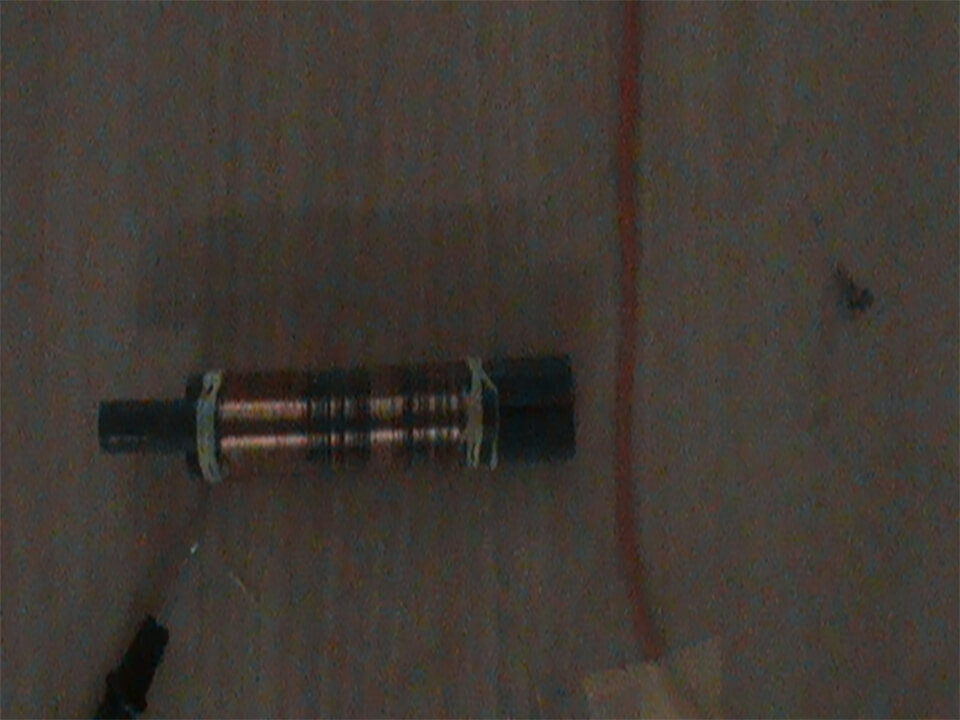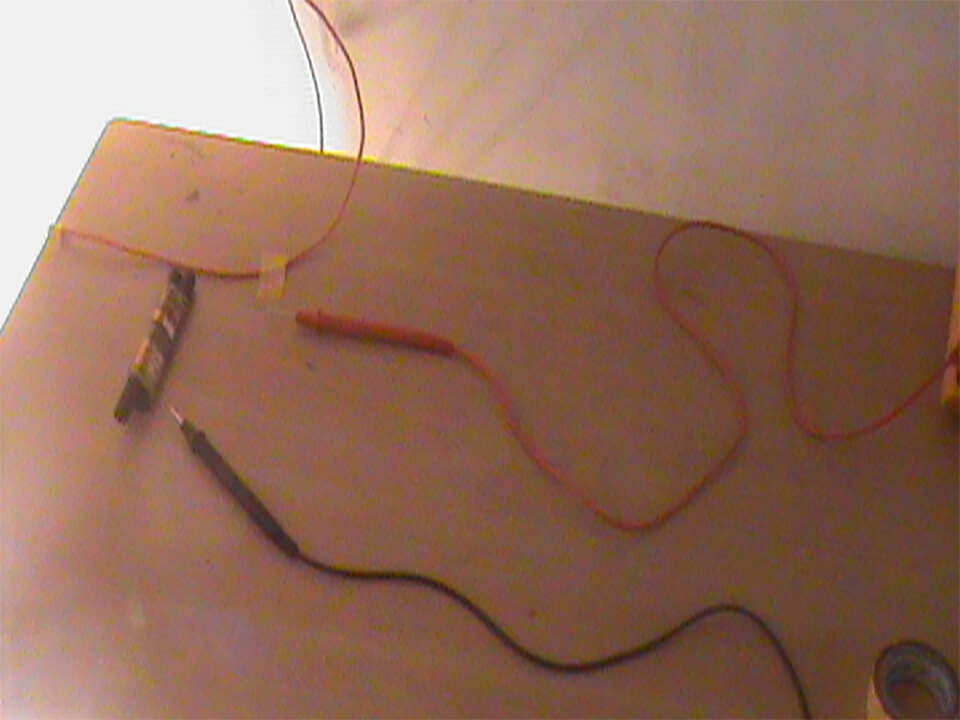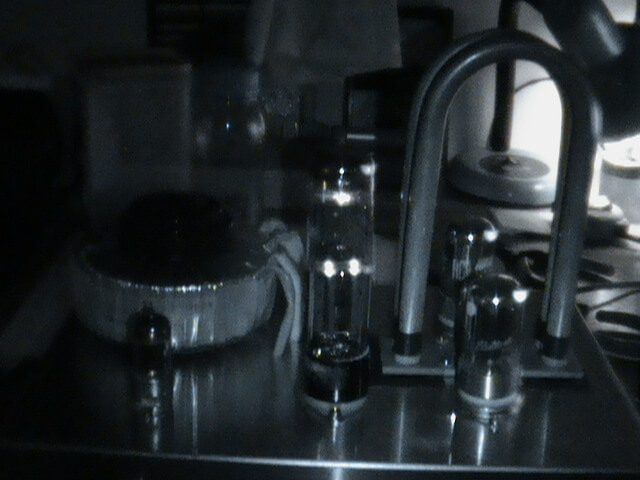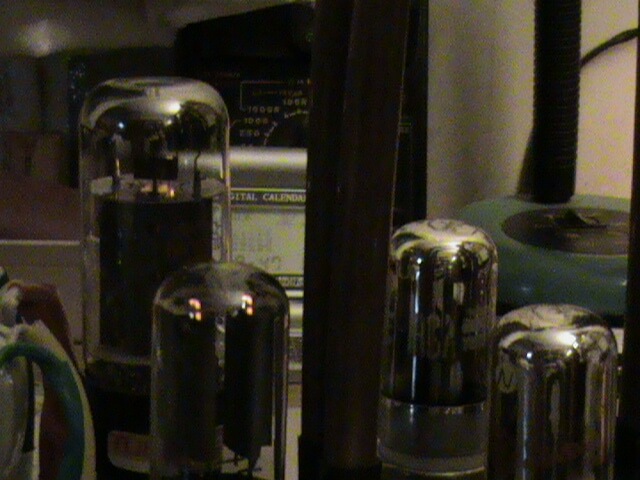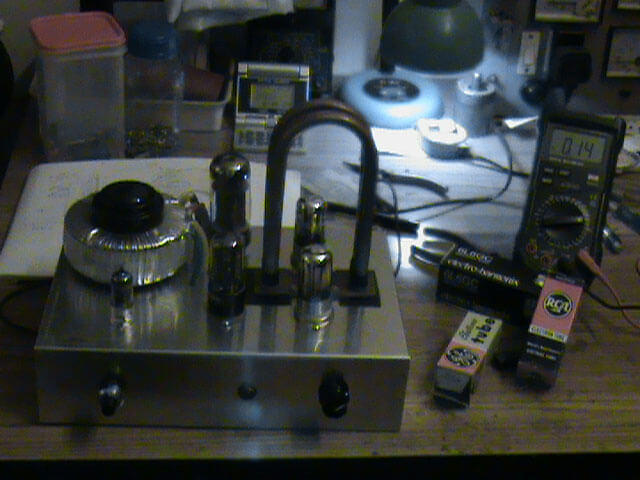Energy transmission over VHF bands (From pure theory to Proof of concept deployment)
The snapshot shows WIP of a VHF TX in my lab which would be a POC demo unit for energy transmission at moderate power. (5-10Watts)
At the energy harvesting end the use of suitable antenna coupled with rectifiers and super caps in the filtering circuit would be used for downloading power which would be dependent on transmission attenuation etc..
I am planning to download a minimum of 5 to 7Watts taking into consideration the above factors which would a technology demonstration at this frequency .
This could further be expanded to transverter networks in the GHz range for powering multiple radio terminals.
Vacuum tubes are being used in the prototype for the following reasons:-
Though semiconductors have certain advantages over vacuum tubes like Smaller in size, lighter in weight , less power consumption , more rugged , lower operational voltages , less heat radiation .
The cardinal reason behind selecting vacuum tubes over semiconductors were ;
Ample stock of vacuum tubes of all categories was available readily at our lab, all in excellent working conditions and their ease of prototype construction.
Vacuum Tubes-Advantages
- Highly linear without negative feedback, especially some small signal types
- Clipping is smooth, which is widely considered more efficient than transistors
- Tolerant of overloads and voltage spikes & surges
- Characteristics highly independent of temperature, greatly simplifies biasing
- Wider dynamic range than typical transistor circuits, thanks to higher operating voltages
- Device capacitance vary only slightly with signal voltages
- Capacitive coupling can be done with low value, high quality film capacitors
- Circuit designs tend to be simpler than semiconductor equivalents
- Operation is usually class A or AB which minimizes crossover distortion
- Maintenance tends to be easier because tubes can be replaced by user
Semiconductor-disadvantages
- Tendency towards higher distortion than equivalent tubes
- Considerable negative feedback required for low distortion
- Sharp clipping, due to considerable negative feedback
- Device capacitance tend to vary with applied voltage
- Large unit to unit variations in key parameters, such as gain and threshold voltage
- Stored-charge effects adds signal delay which complicates high frequency and feedback amplifier design
- Device parameters vary considerably with temperature, complicating biasing and raising the possibility of thermal runaway
- Cooling is less efficient than with tubes, because lower operating temperatures are required for reliability
- Power Mosfets have high input capacitance’s that vary with voltage
- Class B totem-pole circuits are common which can result in crossover distortion
- Less tolerant of overloads and voltage spikes than tubes
- Nearly all transistor power amplifiers have directly- coupled outputs and can damage output connected devices even with active protection
- Capacitive coupling usually requires high value electrolytic capacitors which give inferior performance at audio frequency extremes
- Greater tendency to pick up radio-frequency interference due to rectification by low voltage diode junctions or slew rate effects
- Maintenance more difficult, devices are not easily replaced by user or even by repair facilities
Power harvesting
Though the transistors have certain advantages over vacuum tubes like Smaller in size , lighter in weight , less power consumption , more rugged , lower operational voltages , less heat radiation. The core reason behind selecting vacuum tubes over transistors are
Vacuum Tubes Advantages
- Highly linear without negative feedback, especially some small signal types
- Clipping is smooth, which is widely considered more musical than transistors
- Tolerant of overloads and voltage spikes
- Characteristics highly independent of temperature, greatly simplifies biasing
- Wider dynamic range than typical transistor circuits, thanks to higher operating voltages
- Device capacitance’s vary only slightly with signal voltages
- Capacitive coupling can be done with low value, high quality film capacitors
- Circuit designs tend to be simpler than semiconductor equivalents
- Operation is usually class A or AB which minimizes crossover distortion
- Output transformer in power amp protects speaker from tube failure
- Maintenance tends to be easier because tubes can be replaced by user
Disadvantages of transistors:-
- Tendency towards higher distortion than equivalent tubes
- Complex circuits and considerable negative feedback required for low distortion
- Sharp clipping, in a manner widely considered non-musical, due to considerable negative feedback commonly used
- Device capacitance tend to vary with applied voltage
- Large unit to unit variations in key parameters, such as gain and threshold voltage
- Stored-charge effects adds signal delay which complicates high frequency and feedback amplifier design
- Device parameters vary considerably with temperature, complicating biasing and raising the possibility of thermal runaway
- Cooling is less efficient than with tubes, because lower operating temperatures is required for reliability
- Power Mosfets have high input capacitance’s that vary with voltage
- Class B totem-pole circuits are common which can result in crossover distortion
- Less tolerant of overloads and voltage spikes than tubes
- Nearly all transistor power amplifiers have directly- coupled outputs and can damage speakers, even with active protection
- Capacitive coupling usually requires high value electrolytic capacitors which give inferior performance at audio frequency extremes
- Greater tendency to pick up radio-frequency interference due to rectification by low voltage diode junctions or slew rate effects
- Maintenance more difficult, devices are not easily replaced by user or even by repair facilities
- Older transistors and IC’s often unavailable after 20 years making replacement difficult or impossible



